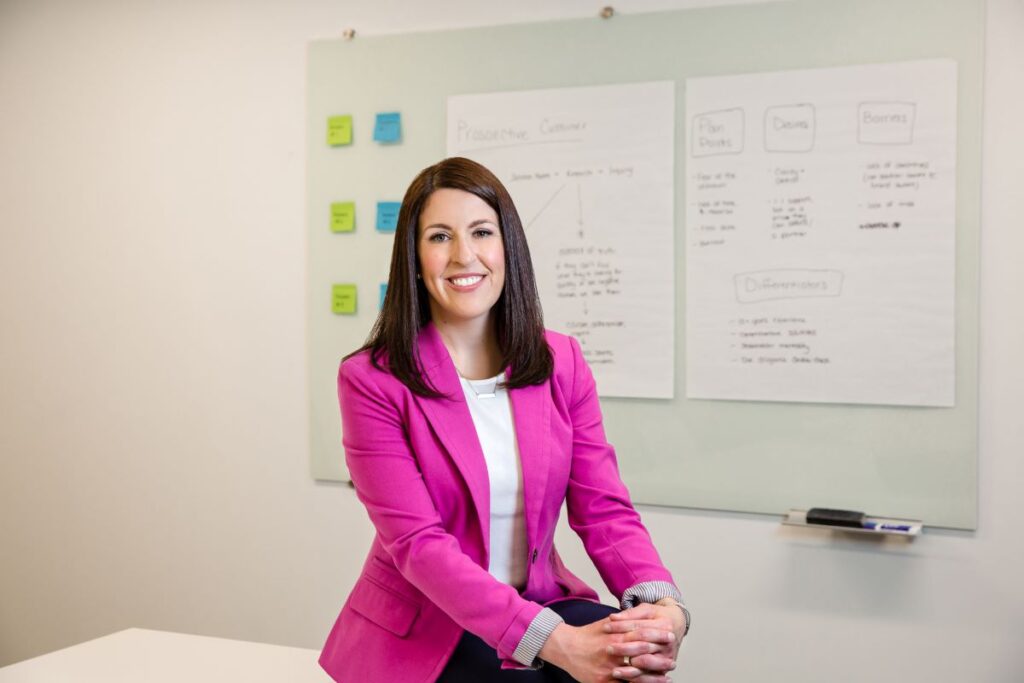Calculating Return on Investment: When, Why, & How?
Last weekend, I found myself in Seattle, awake at 1AM (crazy for me), drinking whiskey and talking to a friend about IRRs – or internal rate on returns. It was the nerdiest of scenes, but one of the few one could find me awake that late at night. The next day, I went down a rabbit hole refreshing myself on why to use an IRR in lieu of return on investment (ROI). I remembered: (a) calculating return on investment (ROI) is much simpler math(!) than IRR and (b) for small businesses, ROI is where it’s at. And that we small business owners don’t use it as often as we should.
I do the literal and figurative math when I think about spending Ellevated Outcomes’ money. The literal, simplest version looks like: will this investment (in hiring, consulting, education, software, marketing) make me more then I spend on it? And how long will that take? The more figurative version may be: is the headspace this thing takes up for me greater than the money I’m willing to spend to solve the problem? (Enter Tammy McCammon-Tracy earlier this year, ha).
So, here are 3 questions for calculating return on investment…

When?
For a small business, I’d suggest calculating return on investment when you’re unsure or nervous to spend a healthy amount of money on something. To which, you may ask, “What’s a ‘healthy’ amount of money?” Of course, the answer is: it depends. It depends on the size of your business, your cashflow, and your money mindset. For me, that number is currently ~$1,500. Some will think that’s low, and some will think it’s high. And that’s the point: it’s different for everyone.
If you don’t want to do the math (that’s cool and understandable!), you can simplify with this question: “Will I/my business get more value out of this than the money I spend on it?” – especially when you’re thinking about coaching, consulting, or advising. My favorite thing in the world is when Sarah Patton reports back from a prospect consult, “They say, ‘Ellevated Outcomes is the investment they know they need to make.'” At that moment, I know that we’re among our people 🙂
Why?
There’s a quote that I partially like. Disclosure: the part of me that doesn’t like it, is the immature part who’s in a hurry, ha:
If you want to go fast, go alone. If you want to go far, go together.
Proverbially, this sums up why it makes sense to invest in resources and people, right? Simply stated: you calculate ROI so that you can most effectively invest in things and people, who will take you further, in the short, medium, and long-term.
Over the past 4 years, I’ve made $185,000 worth of investments in people, coaching, education, software, and marketing.
Scrappy is my superpower, so I do a lot of DIY, but I always try to walk the talk. If clients are going to invest in our services, I believe in putting out what I’m taking in. So this means that we invest a lot in others’ skills and education. We try to go first.
About 20% of our investments have generated a favorable short-term ROI. The other 80% is all about our medium and long-term game.
How?
Different businesses and people use varying benchmarks to determine if an investment is worth it. Here are 3 examples of questions and equations, from simplest to most complex.
1. “Will this investment make me at least as much money as I spend on it?”
Calculation: Is $ generated > $ spent? And how long will it take?
2. In the business I used to work for, the magic time horizon was 3 years. Every investment decision from on-high came down to: “Will we break even on this investment within 3 years?”
Calculation: ROI = additional profit over 3 years / $ spent on investment.
Then, you must ensure that that extra money generated is sustainable and continuing to grow. That’s what makes it a true investment, as opposed to a trade off.
3. For us and our clients, we like to look at the short, medium, and long term ROI. I’m sure that you’ll be shocked to know that we’re nutty about the numbers, and we’re proud to say that our clients’ average ROI with Ellevated Outcomes in year 1 is 300%. In year 2, it’s often another 300%-600%. (I feel like the imaginary lawyer in me has to caveat that these numbers vary with the client’s effort)! Beyond that, results compound because we make changes in the foundation of the business so that every other change magnifies the positive outcomes.
Calculation: Annual ROI = (this year’s profit – last year’s profit) / $ spent on investment
When we’re doing client work in our Advisory Practice, we typically start with profitability and pricing adjustments because we know that this gives the quickest, significant ROI. Then, we often move into business development or hiring, as that’s where the medium and long-term ROI lies. But as always, it depends on the client, their current business, and their future goals.
And please do let me say – and give you permission to feel: investments are scary! Especially, if it’s your first significant one or if you’re investment in an unknown field. I’ve certainly made unwise ones that have spooked me. Always trust your gut. And calculating return on investment is another tool for you, to marry your head with your heart.
PS – If you want to calculate the ROI without thinking about these equations, here’s a great calculator.


